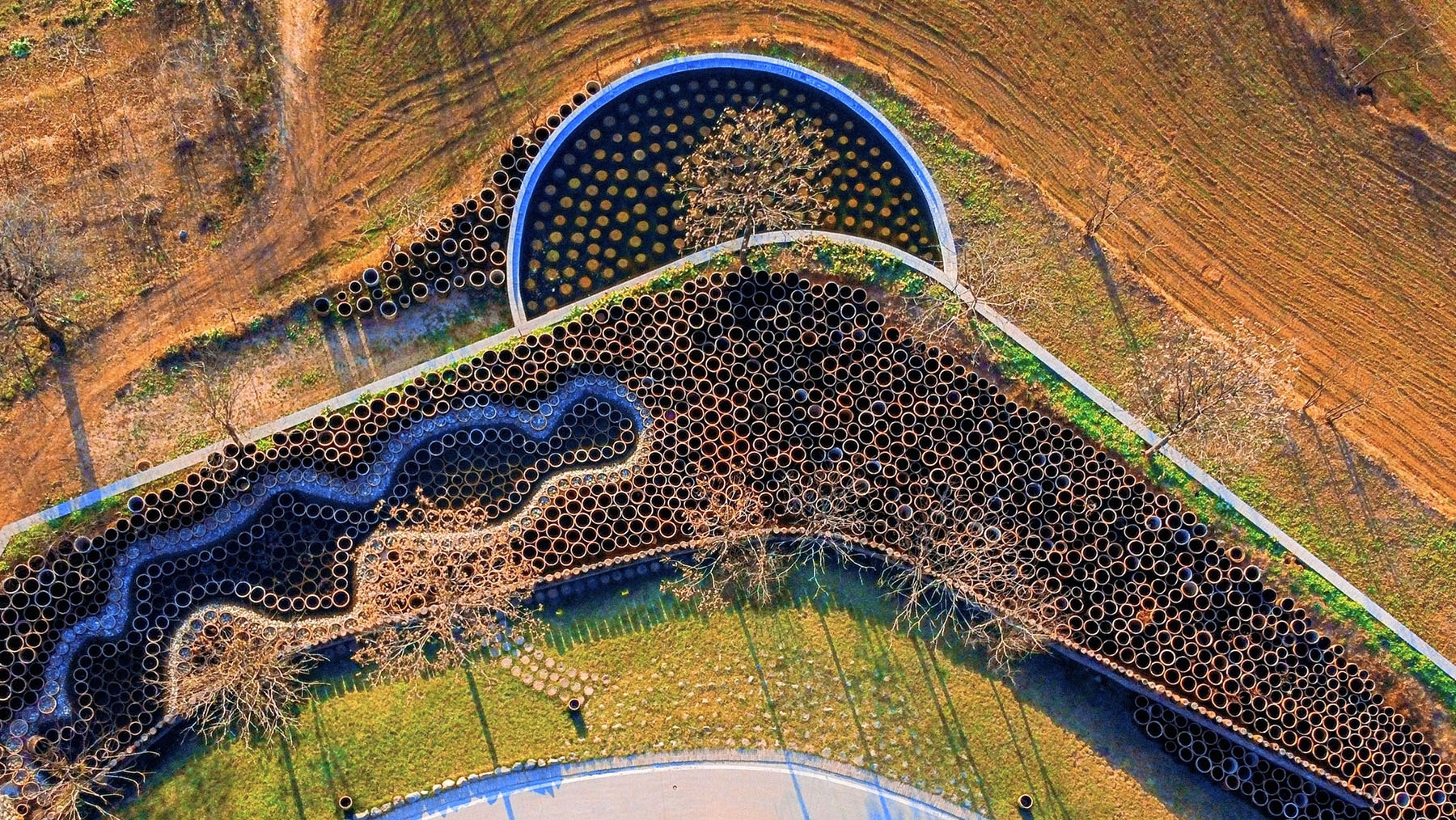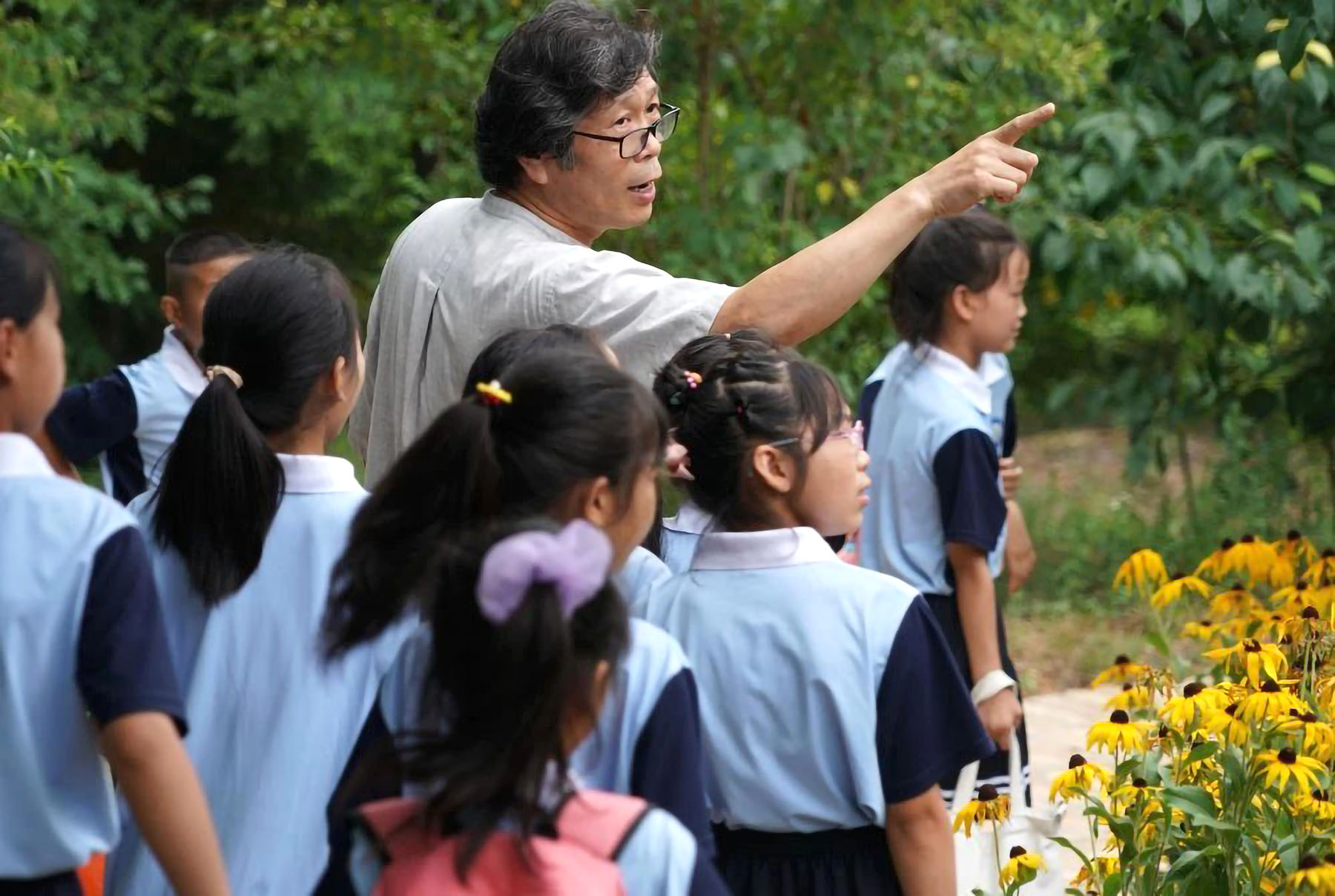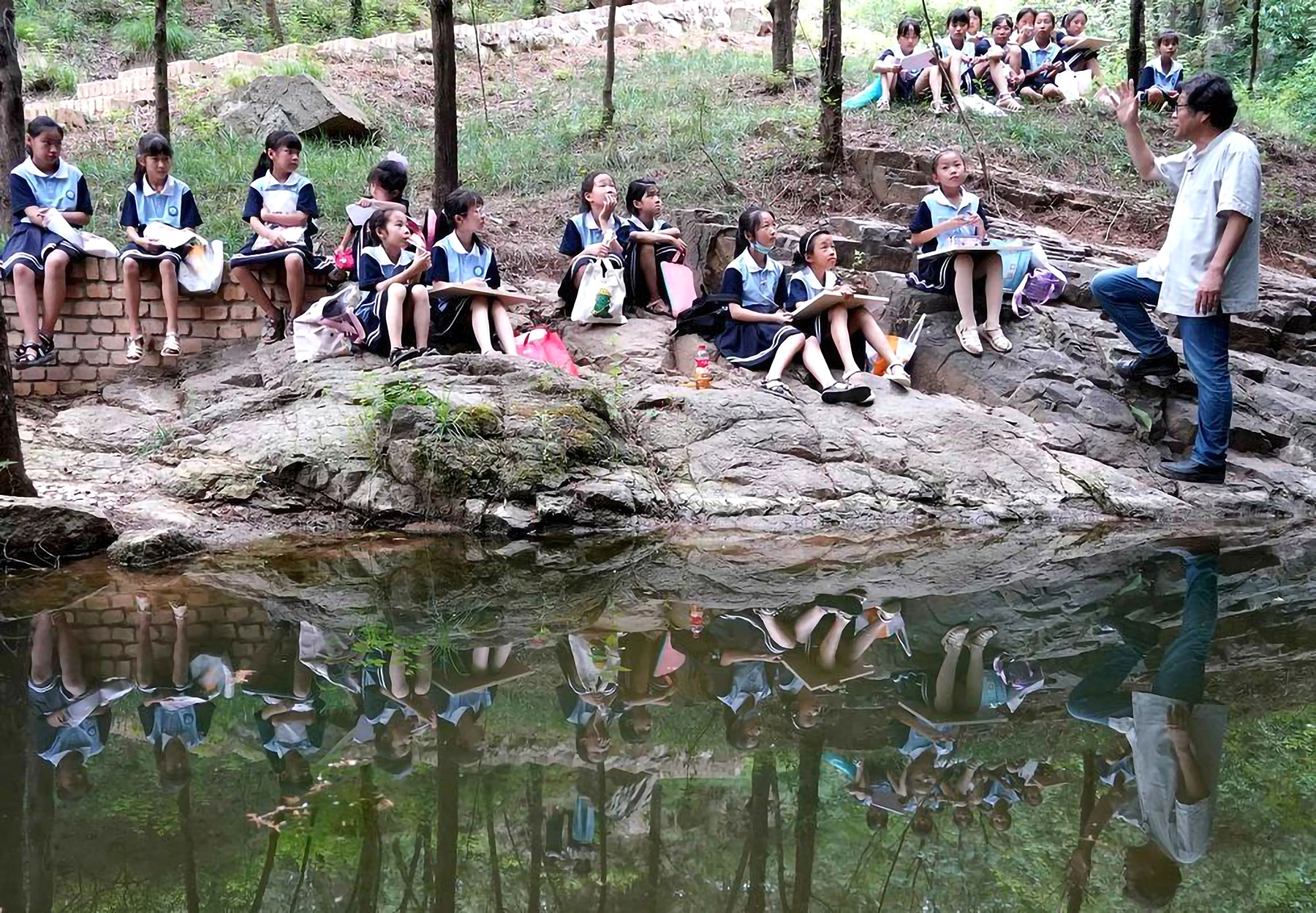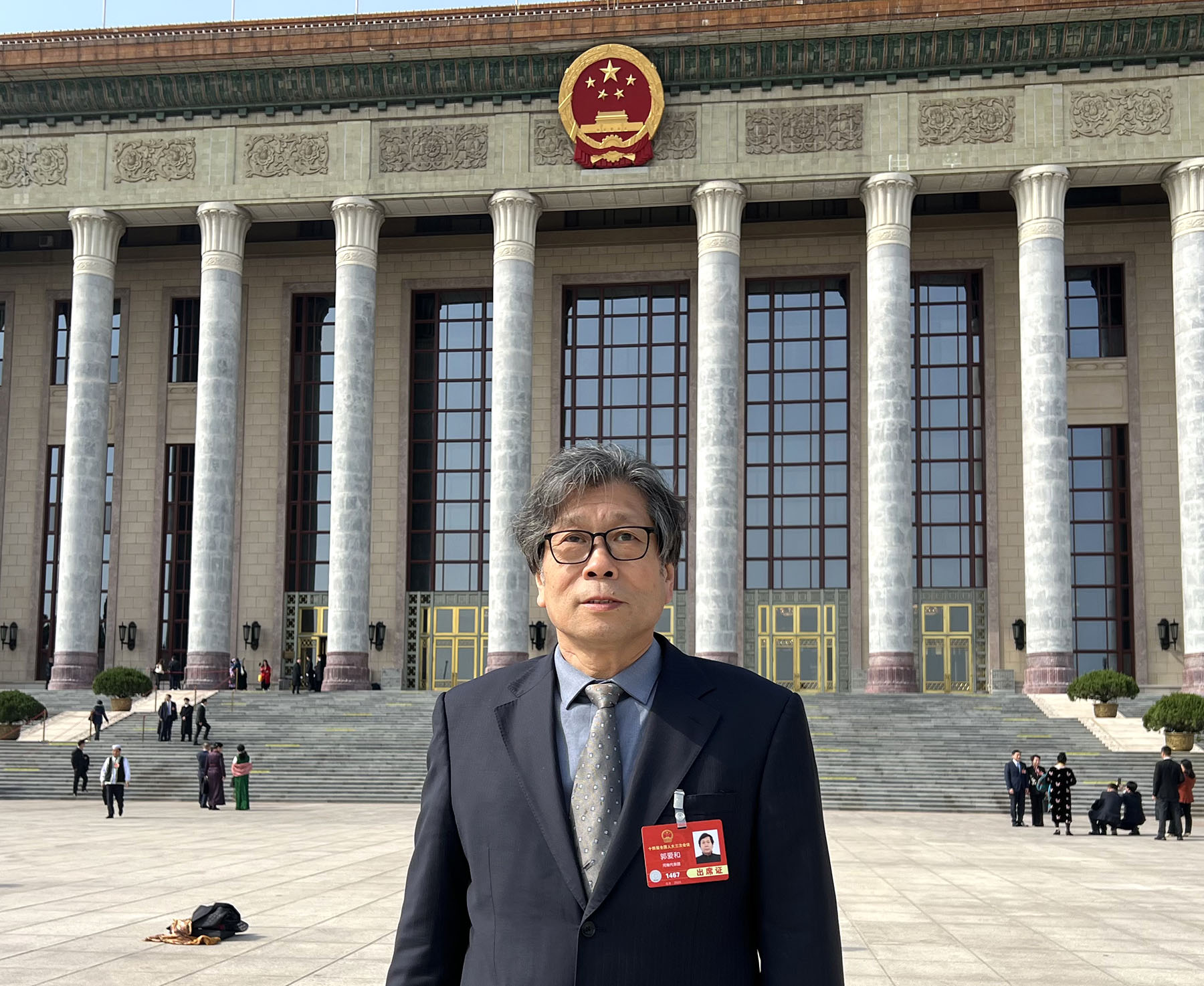NPC deputy combines his passion for sancai craft with development zeal to transform rural economy, Wang Ru and Shi Baoyin report.

Huashuwa village, in Luoning county, Luoyang, Henan province, has transformed from an impoverished village deep in the mountains into a buzzing tourist destination thanks to the tireless efforts of a ceramic artist.
Guo Aihe, a deputy to the 14th National People's Congress, who is also a master of Chinese arts and crafts specializing in sancai, or tricolored glazed ceramic art, is the brain behind the metamorphosis.
The story stems from Guo's passion for sancai art. To him, painted ceramic art is not limited to three colors, but the whole gamut. Although Tang Dynasty (618-907) sancai came to be popular as a type of painted ceramic and thrived during the era, the art went relatively unnoticed in the subsequent dynasties. But its existence was never in question.
At Luoyang Normal University, Guo chose to make a sancai glazed painting, which means applying the painted ceramic techniques to make a painting, his graduation project in 1986. It won applause from Ye Peng, then head of the university, who encouraged him to continue with his creations and study the art form.
READ MORE: Art gives new life to village
Since then, the 61-year-old started his now four-decade bond with the old art and created outstanding artistic works, many of which have been displayed at art institutes at home and abroad. However, this ambitious artist decided that personal accomplishments and milestones were not enough, he wanted to draw more people to this art.

In 2013, Guo chanced upon the mountain village of Huashuwa during a trip, and was amazed by its breathtaking natural beauty. But economically backward, the village had neither tap water, electricity, nor good roads.
The village is only 62 kilometers from Neolithic Yangshao Site in Sanmenxia, Henan, dating back over 5,000 years, which had yielded many pottery artifacts. It is also not far from Ru Kiln and Jun Kiln, both prominent kilns during the Song Dynasty (960-1279). Therefore, Guo believed the place was the cradle of ceramic art and wanted to reshape it with this cultural feature.
And there the idea of building a ceramic art village was born. Two years later, he signed an agreement with the local government to renovate this village with his artist's eyes.
"It was a natural space covering 3,000 mu (2 square kilometers). I wanted to integrate the charm of sancai art with the natural environment," he says.
His team collected a great number of ceramic vats from local people of Luoning and made a giant art installation out of them. From a bird's-eye view, the installation looked like a young woman, as if to say "ceramic is the daughter of the soil".
"As early as the Yangshao cultural period (a Neolithic culture dating back 4,600 to 7,000 years), people made pottery vats for storage and cooking. Now with the passage of time, they are no longer daily necessities for people. But in this village, they are now endowed with new life, becoming artistic works which are testimonies to history and also reviving memories," says Guo.

The rest of the vats were also put to good use as they were turned into flowerpots, dust bins, guideposts and winding footpaths from where visitors can see well-spaced terraced fields and valleys in full bloom.
Artists also made glazed paintings with sancai techniques and used them to decorate old houses, rammed-earth walls and traditional cave dwellings, keeping the village's old-world vibe while adding new breath to it.
"We want to take the ground as the painting canvas, turn mountains into parks and decorate the village by adding to its rustic charms. The village, after renovation, retains its natural beauty and shows the beauty of sancai art," he says.
Now, the village attracts more than 100,000 visits annually, and even nearby villages can benefit from this tourist spot since people can supplement their income by selling agricultural products.
During the process, Guo has also worked to improve rural children's aesthetic education in Luoning by donating fine art tools to schools, subsidizing fees of art majors and organizing activities to collect money for rural fine arts education.
When he was sketching at the village in 2015, he was surrounded by curious children who asked questions about his painting board, brushes and pigment, which were strange to them.
"Looking into their eyes, I felt rural children yearned to appreciate and comprehend beauty, but lacked effective means to do so," says Guo.

"I know our country has put in a lot of hard work and efforts to alleviate extreme poverty, but I pondered how I could help the villagers transcend emotional poverty. Therefore, we initiated our efforts with children, focusing on their artistic education to guide them to discover, understand and pursue beauty, thereby nurturing a beautiful mind and establishing a solid foundation for life," he adds.
"I really love drawing because it makes me relaxed. Things that don't occur in life can be captured by brushstrokes on paper," says Shang Jiale, a middle school student in Luoning.
A highlight of Guo's effort is an annual art activity which invites 100 artists a year to make creations at the village, donate their works at an auction, and offer the money for rural aesthetic education. All steps of the activity are completed in one day, showing the urgency of improving rural art education.
ALSO READ: Breathing new life into brushwork
As of now, 650 artists have created 813 works in the activities, donating over 2 million yuan ($275,528) through sales.
"Before Guo's arrival, we had a shortage of fine arts teachers. Even when one was appointed to work in our school, they left in a short time. We had no incentives for them to stay. (Though we have art lessons on the curriculum,) we didn't even have the concept of aesthetic education," says Li Wanjun, headmaster of a junior high school at Luoning.
"It was Guo who made us realize its importance. As a matter of fact, rural vitalization and all other aspects of life require an aesthetic perspective to discover and create," Li adds.
Contact the writers at wangru1@chinadaily.com.cn


